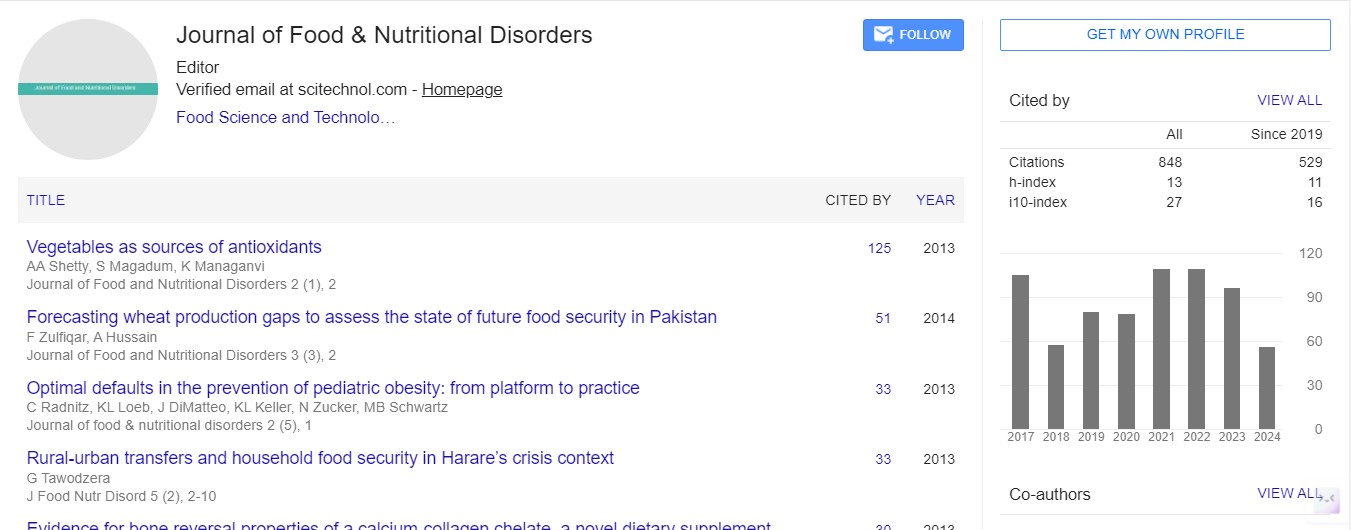Acrylamide mitigation in bread influence by different extract: A correlation study with reducing sugars and asparagine
Susana Jesus, Ines Delgado, Carla Motta, Carlos Brandao and Isabel Castanheira
National Institute of Health Doctor Ricardo Jorge, Portugal
: J Food Nutr Disor
Abstract
Statement: Acrylamide is a carcinogenic contaminant produced during food processing at high temperatures, in the presence of asparagine and reducing sugar. With the acrylamide occurrence study in foods, it was verified a need to develop acrylamide mitigation strategies in different foods. However, the mitigation of this contaminant in food is difficult without affecting the sensory and nutritional properties. So, the aim of the present work was to understand the effect of some mitigator extracts in acrylamide mitigation in bread and, also developed two new and fast methods to identify and quantify individuals’ sugars and asparagine in bread to make a relation with the acrylamide mitigation.
Methodology & Theoretical Orientation: For this study was selected the bread matrix, wheat and rye, and selected mitigator agents (lemon balm and fennel). In relation to the detection and quantification of acrylamide and was used an UPLC-MS/MS was used. Then for the asparagine analysis was used an Ultra Performance Liquid Chromatography coupled to a Photo Diode Array (UPLC-PDA) and for quantification of individuals sugars was used the UPLC-MS/MS.
Findings: It was accomplished around 20% of acrylamide mitigation in wheat bread, where the lemon balm has the highest mitigation. In the sugar quantification method was used the following chromatographic conditions were then tested: mobile phase A with acetonitrile/ water (0.1% ammonium hydroxide) and mobile phase B with acetonitrile/water (0.1% ammonium hydroxide) with a flow of 0.2 ml/min for 32 minutes. Comparing the two matrices (flour and dough bread) we can observe that in dough does not contain sucrose which can be related to the degradation process of the sucrose into glucose and fructose. Then, it was developed the method for asparagine analysis by UPLC-PDA with a BEH C18 column at a length of 260nm. For this analysis was selected the mobile phase that consists in two eluents, AccQTag of ultra-eluent A diluted in 95% deionized water and AccQTag of ultra-eluent B.
Conclusion & Significance: In this study was observed that the lemon balm had the highest mitigation percentage in bread and also it was possible to make a relation between the acrylamide mitigation and the ratio of precursors, sugars and asparagine concentration. The present study is important to understand the acrylamide formation and mitigation in bread and in future in others matrixes.
Biography
E-mail: susana.jesus@insa.min-saude.pt
 Spanish
Spanish  Chinese
Chinese  Russian
Russian  German
German  French
French  Japanese
Japanese  Portuguese
Portuguese  Hindi
Hindi 
